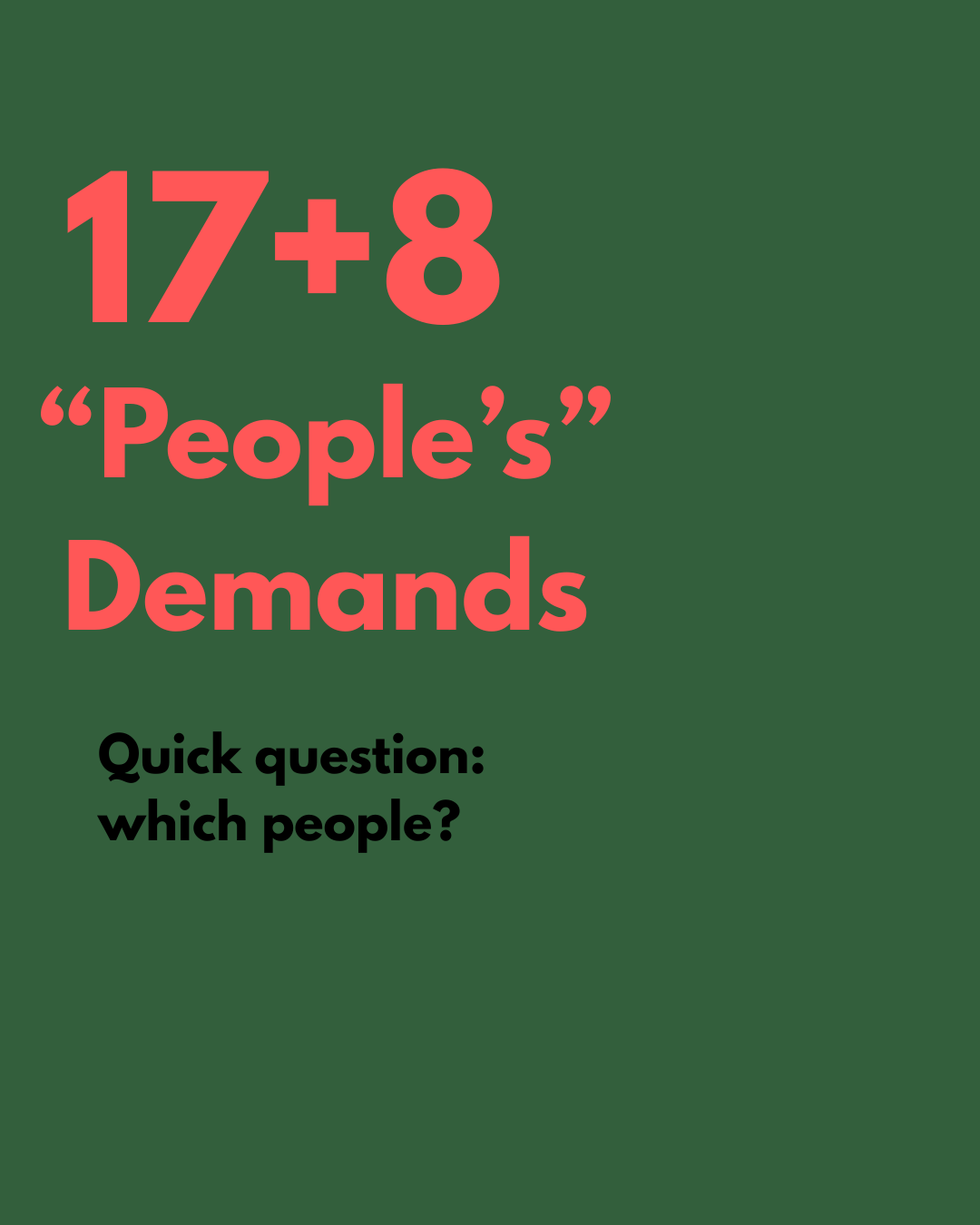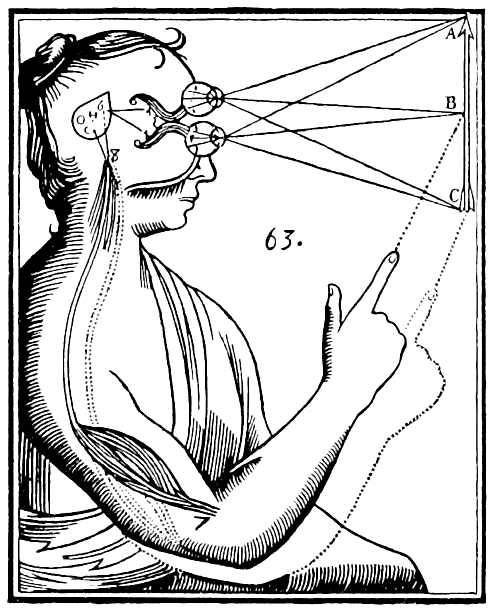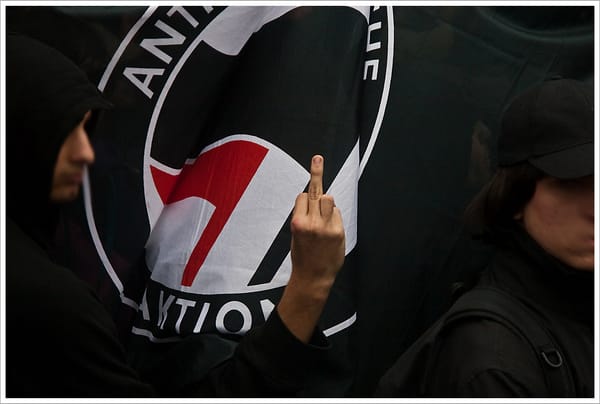How Representation-ism Kills People’s Resistance:
Reflections on the August-September Wave of Demonstrations in Indonesia

To be noted: This article is a personal reflection and is not intended to represent the views of any other person or group.
Over the past month or two, waves of people's resistance have erupted across the globe. Most recently, massive demonstrations in Madagascar have triggered a major political upheaval. This anger was an accumulation of years of suffering endured by the people of Madagascar, one of the poorest countries in Africa, with 75% of its population living below the poverty line. Poor electricity and water services, enjoyed by only 36% of its citizens, worsened the already existing economic situation, triggered an explosion of people’s anger on September 25, 2025. As of early October 2025, the UN High Commissioner for Human Rights recorded at least 22 deaths and hundreds of injuries in the demonstrations. This people’s anger, which transformed into people’s resistance—and sadly, at a cost in lives—ultimately led to the dissolution of the Madagascan government.
Approximately three weeks earlier, Nepal experienced a similar situation. Triggered by the widening poverty gap between ordinary citizens and officials, oligarchs, and their children, commonly referred to as nepo babies, as well as the exploitation of natural resources through destructive mining practices by the oligarchs, people’s anger exploded on September 8, 2025, toppling the Nepalese government within 48 hours. Unfortunately, this political upheaval came at a high price: 72 people died in the unrest, killed by state officials.
We can certainly debate whether the political upheavals and changes in the political landscape generated by the two waves of people’s resistance mentioned above brought ideal results. Nevertheless, the people of Nepal and Madagascar considered them victories. Surprisingly, the two waves of people’s resistance mentioned above were said to have been inspired by the Indonesian people’s resistance that occurred in late August to early September 2025. Like those in Nepal and Madagascar, the Indonesian demonstrations also claimed lives. However, unlike the other two waves of people’s resistance, the opposite occurred in Indonesia: the movement died out prematurely.
In fact, not only have 10 people died, hundreds more have been arrested, and the hunt for other demonstrators continues to this day. A high price to pay for an irony: the wave of people’s resistance in Indonesia inspired the people of Nepal and Madagascar to seize whatever they considered victory, yet failed in its own country.
Indonesian People’s Resistance, August - September 2025
All the reasons for people’s anger in Nepal and Madagascar are also happening in Indonesia: nepo babies occupying public office, the poverty gap between ordinary people and political officials and oligarchs, the exploitation of natural resources that only benefit certain groups of people, corruption, and poor public services are some of the many similar issues that we can see as a common thread in the situations occurring in Nepal, Madagascar, and Indonesia.
In fact, the extremely high poverty gap between those living below the poverty line and the exorbitantly paid members of Parliament, whose statements and public appearances frequently flaunt their wealth and demeaning comments, led thousands to take to the streets on September 25, 2025. A similar incident occurred in Pati, Central Java, two weeks earlier, when thousands of Pati people took to the streets to protest their local government in response to hundreds of percent tax increase.
Since September 25, 2025, the wave of people’s resistance has continued, and their anger has become unstoppable. Three days later, police killed an online motorcycle taxi driver named Affan Kurniawan during a subsequent demonstration in Jakarta. Police brutality is nothing new in the history of police repression in handling demonstrations, but Affan Kurniawan's death, crushed by a Mobile Brigade’s barracuda, referred to the "last straw phenomenon”, became the final straw that caused the tower of straws to collapse.
Soon, thousands of people joined leaderless movements across Indonesia. On the streets, people engaged in brawls with the police. Without any leadership, people worked together in equal cooperation, creating a long-lasting system of resistance.
On a bridge in East Jakarta, for example, people removed bamboo poles and threw them onto the road below to supply weapons to those "fighting" there. Elsewhere, people stoned and burned police stations, which were met with volleys of tear gas. As people in the front line felt tired, others would step forward, giving them a chance to retreat and rest to recharge. This cycle successfully stretched their stamina, as in some areas, the resistance continued almost non-stop for days.
This wave of resistance also included countless previously apolitical individuals. Many took to the streets unprepared, and perhaps without any knowledge of what to do. Nevertheless, they still received everything they needed to cope with tear gas and state surveillance, thanks to the many others who distributed what they needed.
At that time, people who couldn't take to the streets didn't want to miss out on the opportunity to participate. In addition to voicing their anger on social media, many also donated money to support the protesters' logistical needs. This led to people working together to provide supplies such as food and water for the protesters, as well as toothpaste and other items believed to mitigate the effects of tear gas, and face masks to prevent identification by the State.
Everyone worked together. People who went to the streets did not feel better than those who spoke out on social media or donated money, and vice versa. All are equal in mutual aid to voice their organic anger.
Apparently, the poverty gap and repeated police violence that culminated in Affan Kurniawan's death have transformed into open warfare in many regions. Police stations in various locations have been pelted with stones and burned, becoming targets of public anger over the systemic brutality perpetrated by this institution.
The looting of the homes of members of the House of Representatives (DPR) and ministers appears to have been carried out in the spirit of wealth redistribution. The destruction of parliamentary buildings in various cities appears to be a manifestation of people's growing distrust of representative politics. The people seem to agree that this anger must be vertical, and that the police, the executive branch, and members of the House of Representatives are all part of the same system of oppression.
17 + 8: The Failure of the Idea of Representation-ism
Then, suddenly, a group of influencers in Indonesia took the initiative to create a movement we later called the 17+8 Movement, and then attempted to "summarize" the people's organic anger into 17 short-term demands and 8 long-term demands. The people's organic anger, stemming from their daily experiences of oppression, was quantified into a mere 25 demands. Instead of calling them 25 demands, they chose to call them 17+8 demands—referring to August 17th, Indonesia's Independence Day, symbolizing pseudo-nationalism.
Of course, in the name of freedom of expression, which we all believe in, this was perfectly legitimate, especially since these demands substantively addressed aspirations regarding the chaotic political situation and state administration. However, the problem was that the movement shamelessly claimed that their demands were the people's demands. At least, we can still see this claim today on one of their affiliated organization's websites, which mention the demands as "17+8 People's Demands." This is highly problematic, leaving many ethical questions unanswered, not least:
- Who are the people in question?
- If the answer is all the people, to what extent were the people involved in formulating these so-called demands?
- Is it possible to summarize the opinions of 270 million Indonesians in less than a week?
- If the answer is yes, is it possible to summarize all the opinions based on the valid experiences of the people into a mere 17 + 8, a set of numbers chosen for campaign purposes and aesthetics alone?
The last two questions are certainly rhetorical, as we both know the answer is impossible. This raises an ethical question:
- Is it ethical to call these 17 + 8 demands the people's demands?
Amidst the movement's problematic situation, somehow, almost all media coverage and social media discourses seemed to revolve solely around their narratives and activities. This is certainly not surprising, considering they are a group of influencers who have the power to attract media coverage and social media exposure, as well as influence public opinion. Unfortunately, amidst the ban on media coverage of demonstrations, social media has become a hub for information regarding the demonstrations taking place in various cities. However, with the spotlight seemingly focused on the 17+8 Movement, everything else has been drowned out, and the discourse on resistance seems to be represented by social media content about them. Suddenly, the 17+8 Movement has become the new face of the people's resistance movement.
Suddenly, the people's organic and angry resistance was shifted into a polite and normative movement. The people's resistance movement that initially began with anger at the DPR which was felt to no longer represent the people, then seemed to be represented by the 17 + 8 Movement which claimed to be the new representative of the people, then instead sent their demands to the DPR. The people's resistance movement that was initially colored by anger filled with shouts of "Disband the DPR", then represented by the 17 + 8 Movement which claimed to represent the people instead saw the DPR as a channel for change, which automatically undermined efforts to delegitimize the DPR's representation, as painstakingly done by the people they claimed to represent. The facts contradict each other between those who represent and those who are represented.
The demands presented by the 17+8 Movement to the DPR were accompanied by deadlines. They reportedly requested that 17 short-term demands be met by September 5, 2025, and 8 long-term demands by August 31, 2026. On September 5, 2025, the DPR announced a six-point decision, which essentially granted only three of the 17 short-term demands. Some interpreted this as a "small victory," and what followed was a de-escalation, along with their version of a "small victory" accompanied by a much greater defeat for the people: a people's resistance movement that died prematurely.
And these facts should be more than enough to reaffirm the long-standing anarchist thesis that representation is never sufficient to provide a solution or answer to anything.
What is Still Happening until Today
One of the 17+8 demands is for the State to release the arrested protesters and stop criminalizing them, and this demand is not considered a "small victory" in their version. To date, thousands of people have been arrested for their involvement in the wave of resistance. Currently, the state proudly states that 997 of them remain in detention. Several civil society organizations have noted that at least 2 people are still missing and have not been found, and nothing has been done by the new face of the people's representation.
Since these mass arrests, the hunt for anarchists has continued. As of September 2025, at least 42 individuals identified as anarchists had been arrested. Several anarchist networks also reported that several individuals were still on the run, attempting to escape.
The state classifies arrested demonstrators into three categories: instigators, rioters, and looters. Those labeled as instigators fare slightly better because they receive media coverage and are defended in the name of freedom of expression. Unfortunately, the anarchists, along with hundreds of other arrested demonstrators, are mostly categorized as rioters and looters. They are labeled as criminals and, as such, receive a less favorable profile in the news and public perception.
The hunt for these anarchists, along with the nearly one thousand people who are still being arrested and those who are still on the run, has in itself added to the long list of defeats of the Indonesian people, which began with the 10 people who were killed by the State during the wave of demonstration.
To the Names We Should Remember
This article is a form of solidarity for Affan Kurniawan, Andika Lutfi Falah, Iko Juliant Junior, Muhammad Akbar Basri, Rheza Sendy Pratama, Rusdamdiansyah, Saiful Akbar, Sarina Wati, Septinus Sesa, and Sumari, who should be immortalized in our memories as names, not just numbers. These names, in the end, are not in vain. At the very least, these names serve as a monument to the State's failure to fulfill the role it has defined itself in its classical theories: to protect its own people. In fact, they were killed by the State, which has repeatedly confronted its people with violence, no matter how many governments have changed. In their most hoarse voices, their deaths seem to scream that the concept of good governance is merely an illusion.
These names are also worth remembering as people who revealed that the classical theory of a democratic state has been completely proven to fail, because they died in the wave of resistance against the DPR, an entity that should be a balance to executive power, but in practice has openly shown its support for the regime because all political parties that control parliamentary seats have completely become parties supporting the government. Therefore, the role of the DPR to be a guard dog for the running of power will always not run as it should as written in these theories.
In the end, for these names too, we need to point our finger at the nose of representation-ism, that throughout history, they have always failed, and the failures they gave birth to often exacted a very high price.





